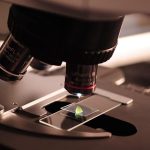November the 7th, 2023 – A talented Croatian team from the famed Ruđer Bošković Institute (IRB) could end up causing quite the significant shift in how electronic devices are developed.
As Poslovni Dnevnik/Borivoje Dokler writes, a multidisciplinary Croatian team of researchers from the highly respected Ruđer Bošković Institute (IRB) could end up making a splash. The team, led by Dr. Katarina Marušić, have developed an innovative methodology for improving the properties and functions of material surfaces.
The application of this methodology could lead to a significant shift in the development of electronic devices going forward. It could also be the same case for sensors and biosensors, as well as in the fields of electro-catalysis and medicine.
The focus of this Croatian team’s complex research is on self-organised monolayers and their cross-linking into a nano-thick polymer coating. A self-assembled monolayer (SAM) is a thin layer of molecules that is self-assembled on the surface of another material.
We might imagine it as a layer with a thickness of only one molecule, which then acts as the architect of the entire piece of material. This means that the molecules in that layer arrange themselves in a highly organised structure, without the need for any additional aids.
“This kind of process of self-organisation enables the rapid and precise creation of nanostructures that are very useful in various sorts of technologies. The study of such layers has profound implications for the development of new applications, i.e. the functions of materials with improved or completely new properties. Think of it as materials that are super-resistant to external influences, highly selective or capable of precise interaction with biological cells. These are just a few of the extremely promising areas that research into self-organised monolayers opens up,” explained Dr. Marušić, a senior research associate in the Laboratory for Radiation Chemistry and Dosimetry of the IRB.









